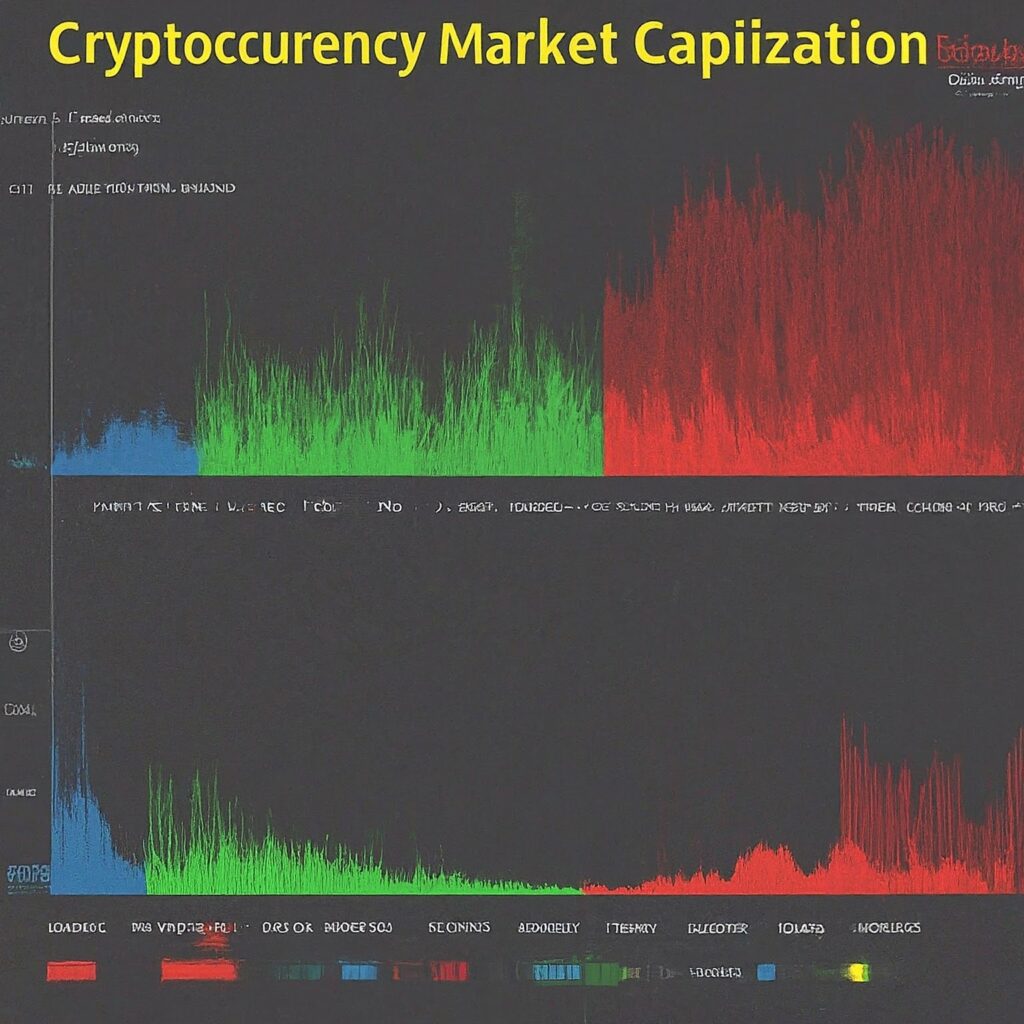Warning: Undefined array key 0 in /home/u117450413/domains/smartblog91.com/public_html/wp-content/plugins/seo-image-optimizer/options/option-panel.php on line 141
Deprecated: pathinfo(): Passing null to parameter #1 ($path) of type string is deprecated in /home/u117450413/domains/smartblog91.com/public_html/wp-content/plugins/seo-image-optimizer/options/option-panel.php on line 141
Cryptocurrency
Is a digital or virtual currency that uses Cryptocurrency for security. It operates independently of a central bank and can be transferred directly between individuals without the need for intermediaries like banks or governments. Cryptocurrencies are decentralized and rely on a distributed ledger called a blockchain, which records all transactions and ensures their authenticity.
Some of the most well-known cryptocurrencies include:
- Bitcoin (BTC): The first and most widely used cryptocurrency, created in 2009.
- Ethereum (ETH): A platform for building decentralized applications, launched in 2015.
- Ripple (XRP): A cryptocurrency designed for fast and cheap international transactions, launched in 2012.
- Binance Coin (BNB): A cryptocurrency used for trading fees and services on the Binance platform, launched in 2017.
- Cardano (ADA): A cryptocurrency focused on sustainability and scalability, launched in 2015.
Cryptocurrencies can be used for various purposes, such as:
- Investment: Buying and holding cryptocurrencies with the hope of selling them at a higher price in the future.
- Transactions: Sending and receiving cryptocurrencies as a form of payment for goods or services.
- Trading: Buying and selling cryptocurrencies on exchanges to profit from price fluctuations.
However, investing in cryptocurrencies is risky and can result in significant losses. It’s essential to do thorough research and consider seeking advice from financial professionals before making any investment decisions.
Cryptocurrency dividends

Is a form of reward given to shareholders of a cryptocurrency project? They are typically distributed as a percentage of the project’s total supply or as a portion of the transaction fees generated by the network. Cryptocurrency dividends can take several forms, including:
- Token Dividends: A portion of the project’s native token is distributed to token holders.
- Staking Rewards: Users who hold and “stake” their tokens in a wallet or on a platform can earn rewards based on the amount of tokens they hold and the length of time they hold them.
- Reflections: Some projects distribute a portion of their transaction fees back to token holders as a reward.
- Airdrops: Occasionally, projects distribute free tokens to their community members or to users who hold specific tokens.
Cryptocurrency dividends can be a source of passive income for token holders, but they are not guaranteed and can be subject to change based on the project’s performance and market conditions. It’s essential to do thorough research on the project and its tokenomics before investing.
Additionally, cryptocurrency dividends are not the same as traditional stock dividends. Stock dividends are a distribution of a company’s earnings to its shareholders, while cryptocurrency dividends are rewards given to token holders based on the project’s performance and tokenomics.
Cryptocurrency volatility
Refers to the degree of fluctuation in the price of a cryptocurrency over a given period. Cryptocurrencies are known for their high volatility, which can lead to significant price swings in a short period. This volatility is due to several factors, including:
- Market speculation: Investors and traders may buy and sell cryptocurrencies based on their expectations of future price movements, which can lead to rapid price changes.
- Regulatory uncertainty: Changes in government regulations or announcements about potential changes can cause significant price fluctuations.
- Technical factors: The underlying technology and infrastructure of cryptocurrencies can influence their price, as improvements or issues can affect their adoption and usage.
- Media coverage: Positive or negative news coverage can influence the perception of a cryptocurrency and its price.
- Market sentiment: The overall mood or attitude of investors and traders towards a cryptocurrency can impact its price.
High volatility can be both an opportunity and a risk for investors. On the one hand, it can lead to significant profits if an investor is able to predict and capitalize on price movements. On the other hand, it can also result in significant losses if an investor is on the wrong side of a price swing.
To manage the risks associated with cryptocurrency volatility, it’s essential to do thorough research, diversify your portfolio, and consider seeking advice from financial professionals before making any investment decisions.
Short selling
In the context of cryptocurrencies refers to the practice of selling a cryptocurrency that the seller does not own, with the intention of buying it back later at a lower price. This strategy is also known as “going short” or “shorting” a cryptocurrency.
Short selling involves the following steps:
- Borrowing: The seller borrows the cryptocurrency from a lender, usually a broker or a cryptocurrency exchange.
- Selling: The seller sells the borrowed cryptocurrency on the open market, typically at the current market price.
- Buying back: The seller buys back the cryptocurrency at a later date, ideally when the price has dropped, to return it to the lender.
- Profit or loss: If the price of the cryptocurrency has dropped, the seller can buy it back at a lower price than they sold it for, resulting in a profit. If the price has increased, the seller will incur a loss.
Short selling can be a high-risk strategy, as the price of a cryptocurrency can rise or fall rapidly, potentially resulting in significant losses. Additionally, short selling may not be available on all cryptocurrency exchanges or may be subject to certain restrictions.
To engage in short selling, it’s essential to have a solid understanding of the cryptocurrency market, the specific cryptocurrency you are shorting, and the risks involved. It’s also crucial to have a well-thought-out strategy and to consider seeking advice from financial professionals before making any investment decisions.
Cryptocurrency market capitalization

Refers to the total value of a cryptocurrency’s circulating supply. It is calculated by multiplying the current price of the cryptocurrency by its total circulating supply. Market capitalization is used to compare the size of different cryptocurrencies and to understand their relative importance in the market.
The market capitalization of a cryptocurrency can be calculated as follows:
Market Capitalization = Current Price × Total Circulating Supply
For example, if a cryptocurrency has a current price of $100 and a total circulating supply of 10 million tokens, its market capitalization would be:
Market Capitalization = $100 × 10,000,000 = $1,000,000,000
Cryptocurrency market capitalization is an important metric for investors and traders, as it can help them understand the overall size and potential of a cryptocurrency project. A higher market capitalization generally indicates a more established and well-known cryptocurrency, while a lower market capitalization may suggest a newer or less established project.
However, market capitalization alone should not be the sole factor in determining the potential value of a cryptocurrency. Other factors, such as the project’s technology, team, and community, should also be considered before making any investment decisions.
Bull market
In the context of cryptocurrencies refers to a period of rising prices and general optimism among investors. During a bull market, the overall sentiment in the cryptocurrency market is positive, leading to increased buying activity and upward price trends.
Key characteristics of a bull market in cryptocurrencies include:
- Rising Prices: Cryptocurrency prices tend to increase steadily over an extended period.
- Increased Trading Volume: There is typically higher trading volume as more investors participate in buying and selling cryptocurrencies.
- Optimism: Investors are optimistic about the future potential of cryptocurrencies, leading to a positive outlook on the market.
- New Highs: Cryptocurrencies may reach new all-time highs during a bull market, attracting more attention and investment.
Investors in a bull market often aim to capitalize on the upward price movements by buying cryptocurrencies with the expectation of selling them at a higher price in the future. However, it’s important to note that bull markets are not indefinite, and they can be followed by bear markets, which are characterized by falling prices and pessimism.
During a bull market, investors must conduct thorough research, manage risks effectively, and consider their investment goals before participating in the market to make informed decisions.

Bear market
The realm of cryptocurrencies refers to a period of declining prices and overall pessimism among investors. During a bear market, the sentiment in the cryptocurrency market is negative, leading to decreased buying activity and downward price trends.
Key characteristics of a bear market in cryptocurrencies include:
- Falling Prices: Cryptocurrency prices tend to decrease steadily over an extended period.
- Reduced Trading Volume: There is typically lower trading volume as investors become more cautious and less active in the market.
- Pessimism: Investors are generally pessimistic about the future potential of cryptocurrencies, leading to a negative outlook on the market.
- Market Lows: Cryptocurrencies may reach new lows or experience significant price drops during a bear market, causing concern among investors.
Investors in a bear market often face challenges as the value of their investments decreases. Strategies such as risk management, diversification, and patience are crucial during bear markets to navigate the downturn effectively.
Investors need to stay informed, remain patient, and consider their long-term investment goals during a bear market. Understanding market cycles and trends can help investors make informed decisions and potentially identify opportunities for future growth when market conditions improve.
Blue chip stocks
in the context of cryptocurrencies refer to well-established and financially stable cryptocurrencies with a reputation for reliability and quality. These cryptocurrencies are considered to be less volatile and less risky compared to newer or less established projects.
Characteristics of blue chip cryptocurrencies include:
- Longevity: Blue chip cryptocurrencies have been in the market for a significant amount of time and have demonstrated resilience through various market conditions.
- Market Dominance: They often have a large market capitalization and a strong presence in the cryptocurrency market.
- Strong Development Team: Blue chip cryptocurrencies are typically backed by experienced development teams with a track record of successful projects.
- Wide Adoption: They have a broad user base and are widely accepted for various use cases, such as payments, smart contracts, or decentralized applications.
Examples of blue chip cryptocurrencies include Bitcoin (BTC) and Ethereum (ETH), which are considered the most established and widely recognized cryptocurrencies in the market. These cryptocurrencies are often seen as a more conservative investment choice due to their stability and market dominance.
Investors looking for a more secure and established investment option in the cryptocurrency market may consider blue chip cryptocurrencies as a core part of their portfolio. However, it’s essential to conduct thorough research and consider factors like risk tolerance and investment goals before making any investment decisions.
Initial Public Offering (IPO)
In the realm of cryptocurrencies, an Initial Public Offering (IPO) is a process where a cryptocurrency project or company offers its tokens or coins to the public for the first time. During an ICO, investors can purchase these tokens or coins in exchange for established cryptocurrencies like Bitcoin Ethereum, or fiat currency.
Key points about Initial Public Offerings (IPOs) in cryptocurrencies include:
- Fundraising: ICOs are a way for cryptocurrency projects to raise capital to fund their development and operations.
- Token Distribution: In an ICO, the project distributes a portion of its tokens to investors in exchange for their investment.
- Investment Opportunity: ICOs provide investors with the opportunity to invest in a project at an early stage and potentially benefit from the project’s success.
- Regulatory Considerations: ICOs have faced regulatory scrutiny due to concerns about investor protection, fraud, and compliance with securities laws.
Investing in ICOs can be risky, as some projects may fail to deliver on their promises or turn out to be fraudulent. Investors must conduct thorough research on the project, its team, technology, and whitepaper before participating in an ICO. Additionally, investors should be aware of the regulatory environment surrounding ICOs in their jurisdiction to ensure compliance with relevant laws and regulations.
In the realm of cryptocurrencies, a stock split is not a common occurrence as it is in traditional stock markets. Cryptocurrencies do not have the concept of stock splits like shares of a company.
Cryptocurrencies are typically divisible into smaller units, such as Bitcoin being divisible into satoshis (the smallest unit of Bitcoin). Therefore, there is no need for a stock split in the cryptocurrency world since users can transact with fractions of a cryptocurrency.
Unlike traditional stocks where a stock split increases the number of shares outstanding while reducing the share price proportionally, cryptocurrencies do not undergo this process. The value and divisibility of cryptocurrencies remain intact regardless of market conditions or demand.
In summary, cryptocurrencies do not undergo stock splits like traditional stocks due to their inherent divisibility and decentralized nature, allowing users to transact with any fraction of a cryptocurrency without the need for adjustments to the total supply or value.

Conclusion
In conclusion, delving into the world of cryptocurrencies unveils a realm filled with unique terms and concepts that shape the market’s dynamics. From the fundamental principles of cryptocurrency and dividends to the intricacies of volatility, short selling, and market capitalization, each keyword plays a crucial role in understanding and navigating the cryptocurrency landscape.
Exploring the contrasting environments of bull and bear markets sheds light on the cyclical nature of cryptocurrency price movements, highlighting the importance of investor sentiment and market trends. Additionally, recognizing blue chip cryptocurrencies as pillars of stability and reliability underscores the significance of established projects in a rapidly evolving market.
The concept of Initial Public Offerings (IPOs) in cryptocurrencies provides insight into fundraising mechanisms and investment opportunities, emphasizing the need for due diligence and regulatory awareness. Conversely, the absence of stock splits in cryptocurrencies showcases the unique divisibility and decentralized nature of digital assets.
By comprehensively grasping these trending keywords, investors and enthusiasts can enhance their knowledge, make informed decisions, and navigate the cryptocurrency market with confidence. Embracing the nuances and intricacies of these terms is key to unlocking the potential and opportunities that cryptocurrencies offer in the ever-evolving financial landscape.
Frequently Asked Questions (FAQs) About Cryptocurrencies
1. What is a cryptocurrency?
Cryptocurrency is a digital or virtual currency secured by cryptography, allowing for secure peer-to-peer transactions without the need for intermediaries like banks.
2. How do cryptocurrency dividends work?
Cryptocurrency dividends are rewards distributed to token holders based on a project’s performance or transaction fees. They can take the form of staking rewards, token dividends, or reflections.
3. What is cryptocurrency volatility?
Cryptocurrency volatility refers to the degree of price fluctuation in a cryptocurrency over a given period, influenced by factors like market speculation, regulatory changes, and media coverage.
4. What is short selling in cryptocurrencies?
Short selling in cryptocurrencies involves selling borrowed assets with the intention of buying them back at a lower price. This strategy can be risky due to rapid price changes and market uncertainties.
5. How is cryptocurrency market capitalization calculated?
Cryptocurrency market capitalization is calculated by multiplying the current price of a cryptocurrency by its total circulating supply, providing insight into the cryptocurrency’s size and potential.
6. What defines a bull market in cryptocurrencies?
A bull market in cryptocurrencies signifies a period of rising prices and investor optimism, characterized by increased trading volume, market highs, and positive sentiment.
7. What characterizes a bear market in cryptocurrencies?
A bear market in cryptocurrencies indicates a period of falling prices and pessimism among investors, marked by reduced trading volume, market lows, and negative sentiment.
8. What are blue chip cryptocurrencies?
Blue chip cryptocurrencies are well-established, financially stable projects with longevity, dominance in the market, strong development teams, and wide adoption, offering stability in a volatile market.
9. What is an Initial Public Offering (IPO) in cryptocurrencies?
An Initial Public Offering (IPO) in cryptocurrencies involves offering tokens or coins to the public for the first time to raise capital for project development, providing investors with early-stage investment opportunities.
10. Do cryptocurrencies undergo stock splits?
Unlike traditional stocks, cryptocurrencies do not undergo stock splits due to their inherent divisibility into smaller units, maintaining their value and divisibility without the need for adjustments.

